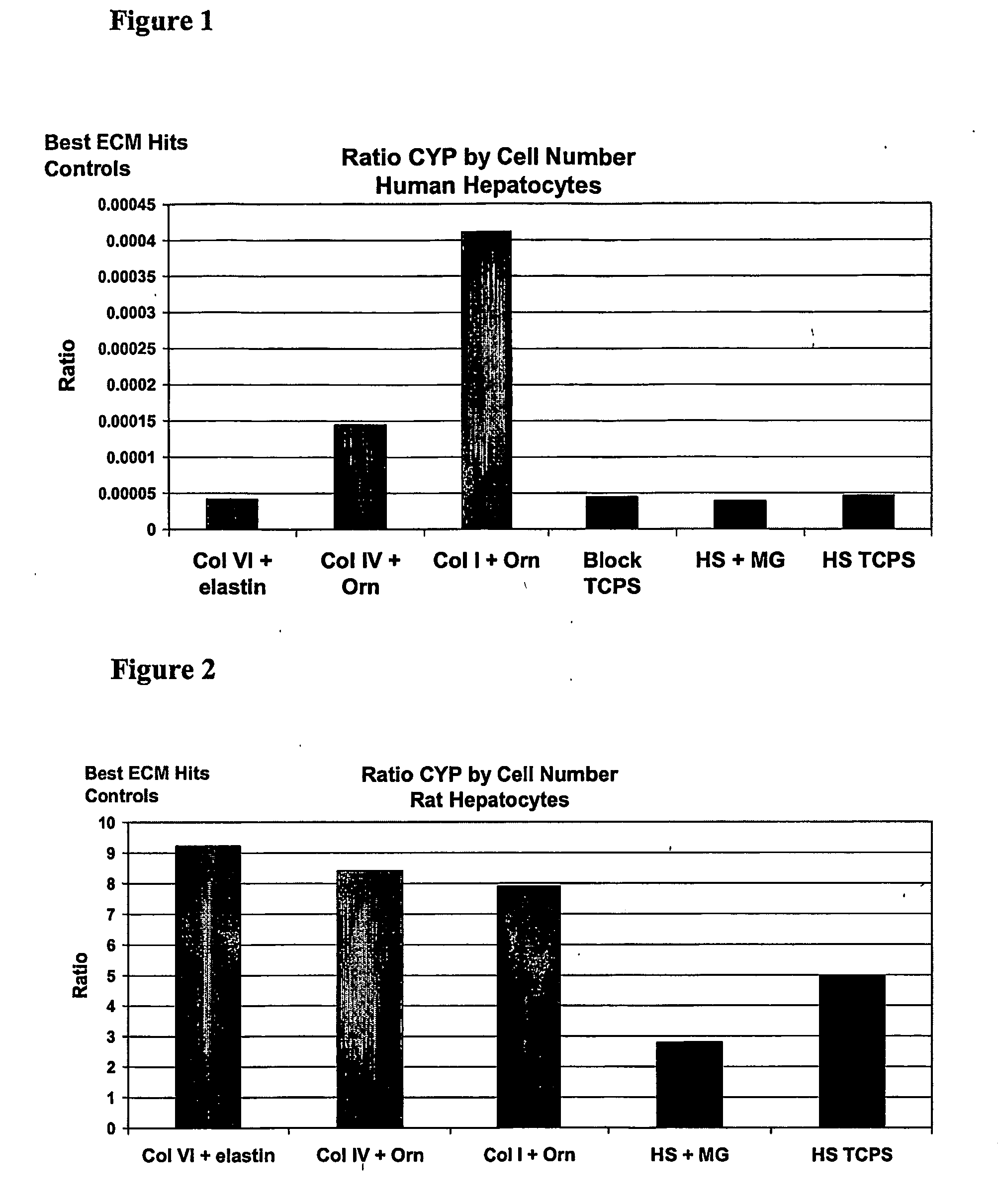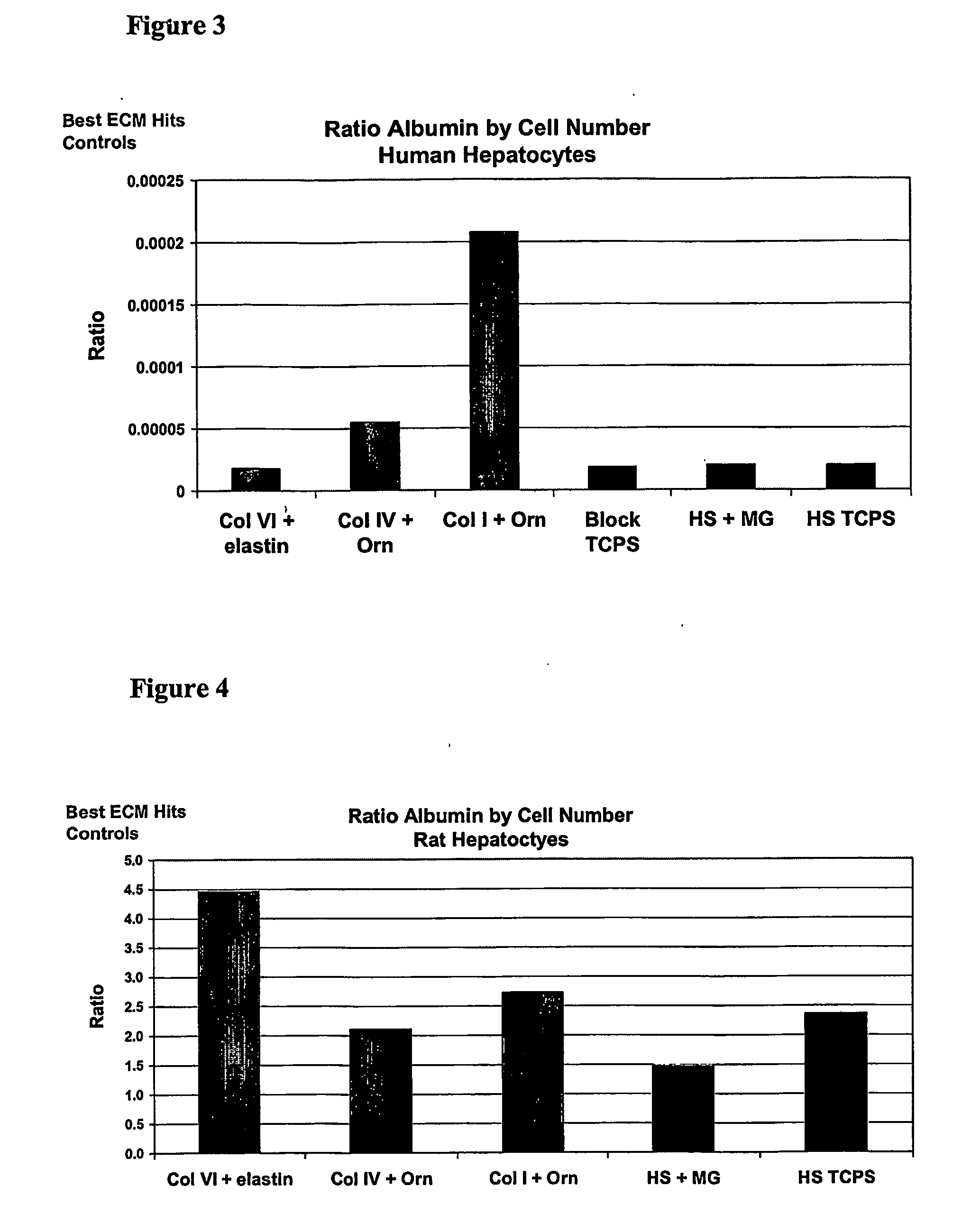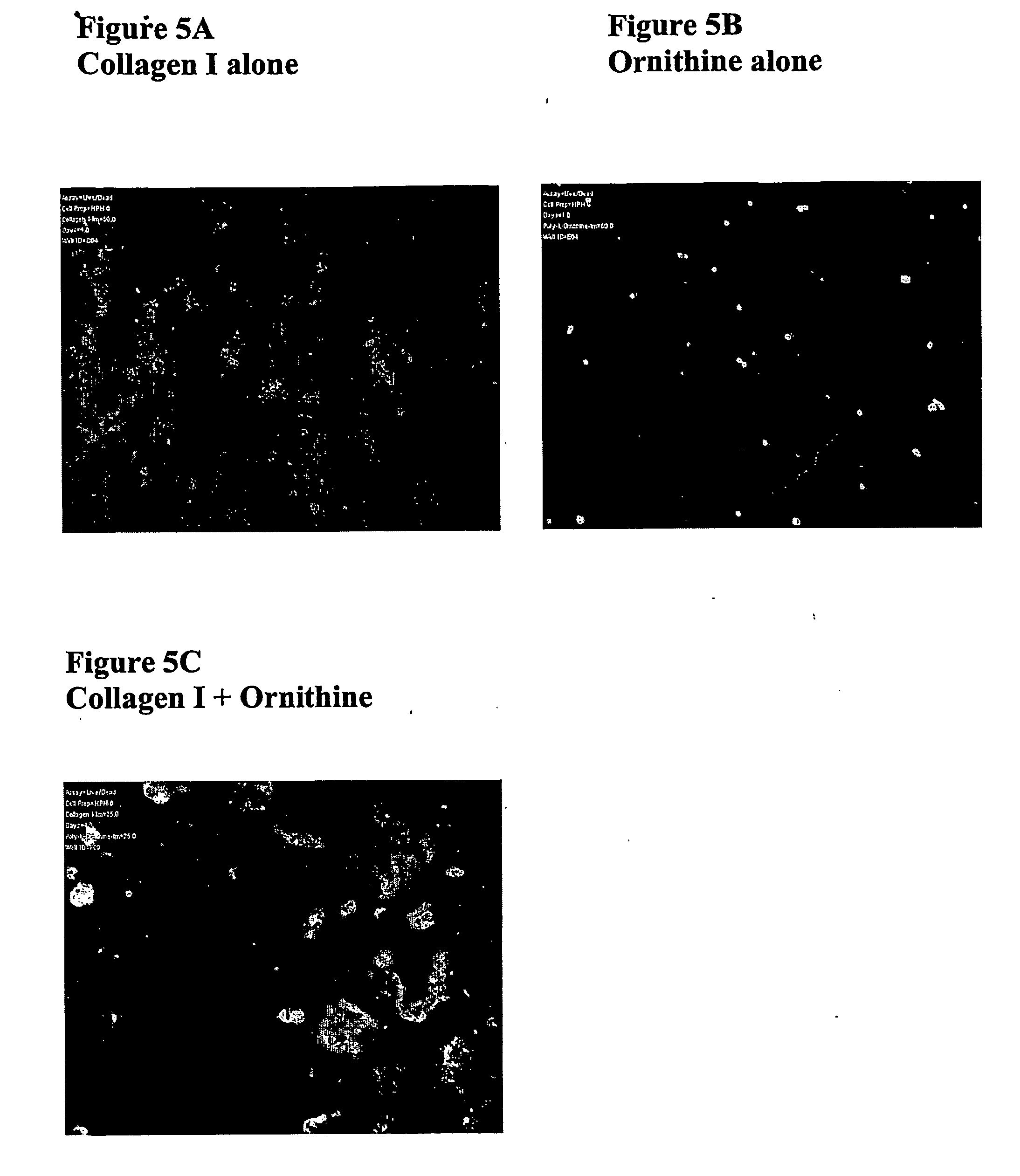Environments that maintain function of primary liver cells
a primary liver cell and environment technology, applied in artificial cell constructs, biochemistry apparatus and processes, instruments, etc., can solve problems such as creating further unwanted complications, and achieve the effects of preventing solubilization of ecms, reducing intermixed biological effects, and increasing cell attachmen
- Summary
- Abstract
- Description
- Claims
- Application Information
AI Technical Summary
Problems solved by technology
Method used
Image
Examples
example 1
[0093] CYP1A activity of the three ECM compositions was assessed using 7-ethoxyresorufin for human primary hepatocytes after 7 days in culture, as described above. FIG. 1 illustrates the results of the assessment. As shown in FIG. 1, Combinations of extracellular matrix proteins on hyaluronic acid provide an equal or better environment for maintenance of CYP activity of human primary liver cells compared to commercial controls. The CYP activity of the three ECM protein compositions is comparable to or better than cells placed on standard tissue culture polystyrene, with collagen I+poly-L-ornithine (CAR A) showing the highest level of activity. Because functional activity is typically lost within three days of culture, CYP activity on day 7 indicates maintenance of cell function.
example 2
[0094] CYP1A activity of the three ECM compositions was assessed using 7-ethoxyresorufin for rat primary hepatocytes on day 6, using the methods described above. FIG. 2 illustrates the results of the assessment. The total CYP fluorescence was lower than most hits in FIG. 1. Again, CYP1A activity for the three ECM compositions is consistently higher then baseline fluorescence, either HA alone or 7-ethoxyresorufin alone. The control wells in the figure are HS+Matrigel™ and HS+TCPS. Thus, combinations extracellular matrix proteins on hyaluronic acid provide an equal or better environment for maintenance of CYP1A activity of rat primary liver cells compared to commercial control.
example 3
[0095] Levels of albumin secretion of human primary hepatocytes were obtained on day 7 using the assay described above. FIG. 3 illustrates this data for the three ECM protein compositions. Data shows that albumin secretion is maintained in wells having the ECM protein composition, and that albumin levels are comparable to control wells of tissue culture polystyrene. Because functional activity is typically lost within three days of culture, albumin activity on day 7 indicates the maintenance of cell function. This data is also indicates maintenance of CYP activity. Thus, combinations extracellular matrix proteins on hyaluronic acid provide an equal or better environment for maintenance of albumin secretion of human primary liver cells compared to commercial controls.
PUM
| Property | Measurement | Unit |
|---|---|---|
| pH | aaaaa | aaaaa |
| adhesion | aaaaa | aaaaa |
| flexible | aaaaa | aaaaa |
Abstract
Description
Claims
Application Information
 Login to View More
Login to View More - R&D
- Intellectual Property
- Life Sciences
- Materials
- Tech Scout
- Unparalleled Data Quality
- Higher Quality Content
- 60% Fewer Hallucinations
Browse by: Latest US Patents, China's latest patents, Technical Efficacy Thesaurus, Application Domain, Technology Topic, Popular Technical Reports.
© 2025 PatSnap. All rights reserved.Legal|Privacy policy|Modern Slavery Act Transparency Statement|Sitemap|About US| Contact US: help@patsnap.com



